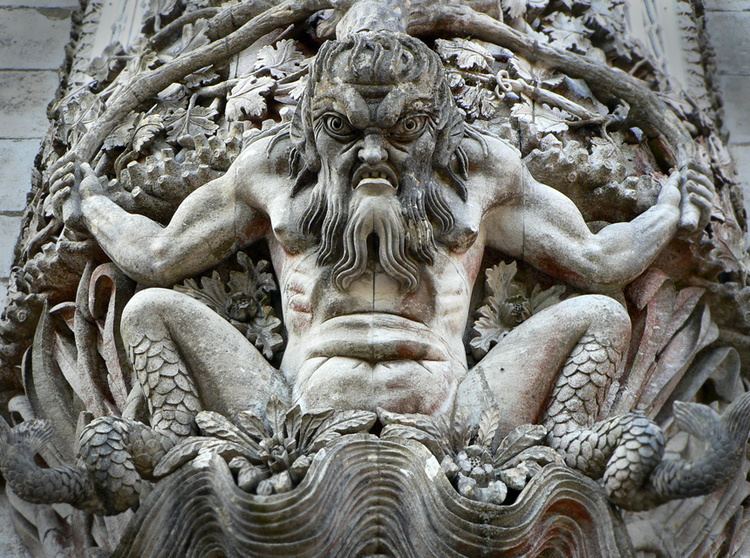 | ||
Description Greek-type mythological character Mentioned in The Year Of the Death of Ricardo Reis by José SaramagoThe First Life of Adamastor by André BrinkL'Africaine (1865 opera)Essai sur la poésie épique by VoltaireLes Misérables by Victor HugoThe Phantom of the Opera by Gaston Leroux, Poésies et Lettres, by Count of Lautréamont Similar Thetis, Doris, Álvaro de Campos, Grandgousier, Nereid | ||
Antiquus scriptum the adamastor
Adamastor is a Greek-type mythological character famed by the Portuguese poet Luís de Camões in his epic poem Os Lusíadas (first printed in 1572), as a symbol of the forces of nature Portuguese navigators had to overcome during their discoveries.
Contents
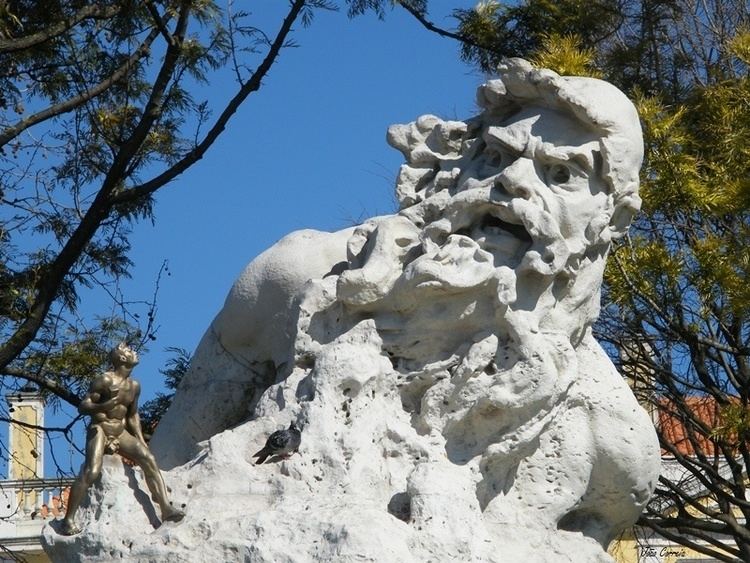
Background

Camões gave his creation a backstory as one of the Giants of Greek mythology, banished to the Cape by Doris for falling in love with her daughter Tethis, now appearing in the form of a storm cloud to Vasco da Gama and threatening to ruin anyone hardy enough to attempt passing the Cape and penetrate the Indian Ocean, which was Adamastor's domain. Adamastor became the Spirit of the Cape of Good Hope, a hideous phantom of unearthly pallor:

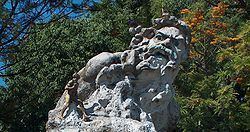
The Portuguese expedition, led by Vasco da Gama, confronts the creature by asking "Who are you?", to which Adamastor tells his story. Deeply moved, the giant vanishes, dispersing the clouds and calming the sea, leaving the path towards India open.
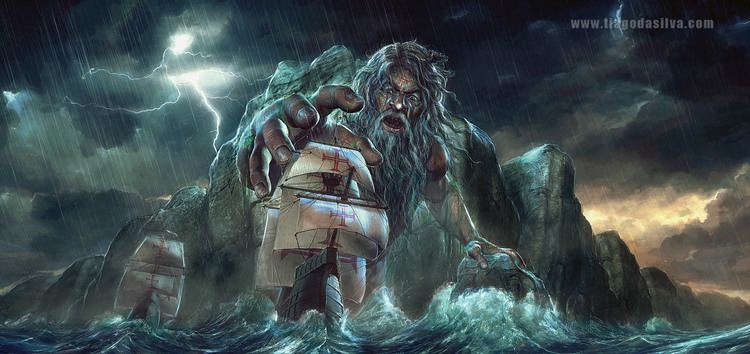
Adamastor represented the dangers Portuguese sailors faced when trying to round the Cape of Storms - Cabo das Tormentas - henceforth called the Cape of Good Hope.
Mentions

Adamastor, both the mythological character and the sculpture, are mentioned several times in José Saramago's Nobel Prize-winning novel, The Year Of the Death of Ricardo Reis.
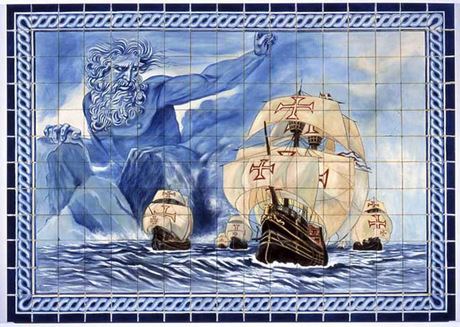
Adamastor has figured in much poetry of the Cape. In The First Life of Adamastor, a novella by André Brink, the writer refashioned the Adamastor story from a 20th-century perspective.
A popular gathering place in Lisbon is also known by the name 'Adamastor' because of the large stone statue of the mythical figure which presides over the space, which is officially called the Miradouro de Santa Catarina. This vista point offers visitors some of the most scenic views of the Tagus river, the 25 de Abril Bridge and the Cristo-Rei monument.
Adamastor is also mentioned in the opera L'Africaine (1865) about Vasco da Gama by the composer Giacomo Meyerbeer. The slave Nelusko sings a song about Adamastor while he deliberately steers the ship into a storm and it sinks.
It is mentioned by Voltaire in his Essai sur la poésie épique. It also appears in the works of Victor Hugo: Les Misérables (III, Marius, chap III) and in a poem dedicated to Lamartine (Les Feuilles d'automne, chap IX). Alexandre Dumas, père refers the giant six times: Le Comte de Monte Cristo (chap. XXXI), Vingt ans après (chap. LXXVII), Georges (chap. I), Bontekoe, Les drames de la mer, (chap. I), Causeries (chap. IX) and Mes Mémoires (chap. CCXVIII). Gaston Leroux also mentions it in The Phantom of the Opera (chap. VI). Herman Melville mentions Adamastor and Camões in his Billy Budd, at the end of Chapter VII.
Adamastor is also the name of a sauropod dinosaur, Angolatitan adamastor, found in Angola, named by the paleontologist Octávio Mateus.
Etymology
The name Adamastor may have been made as
